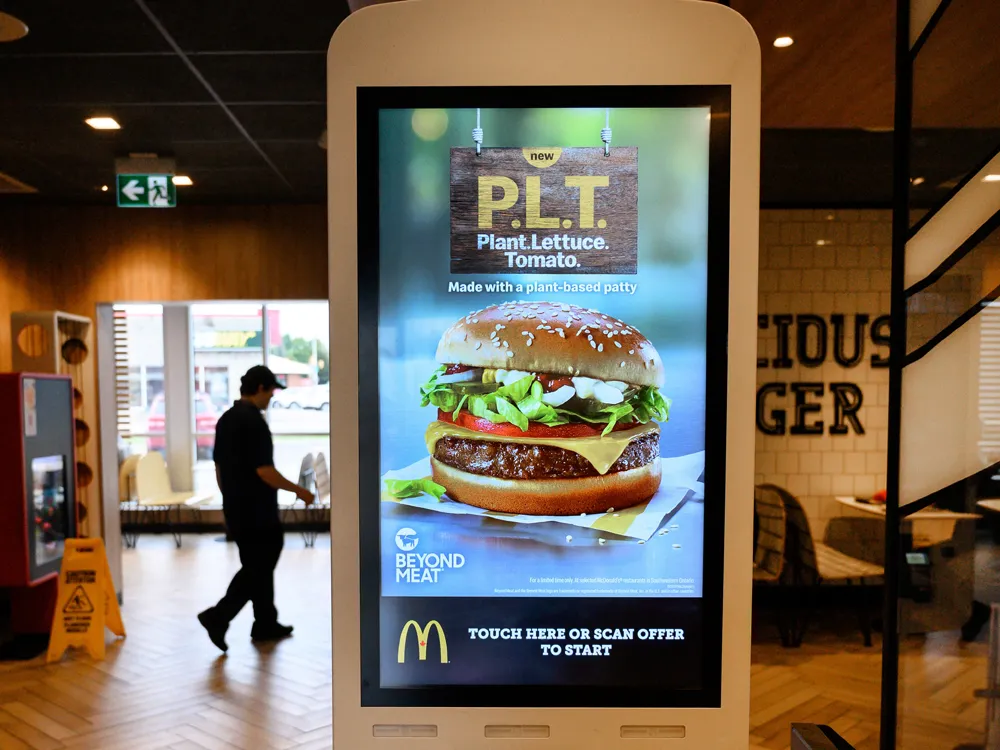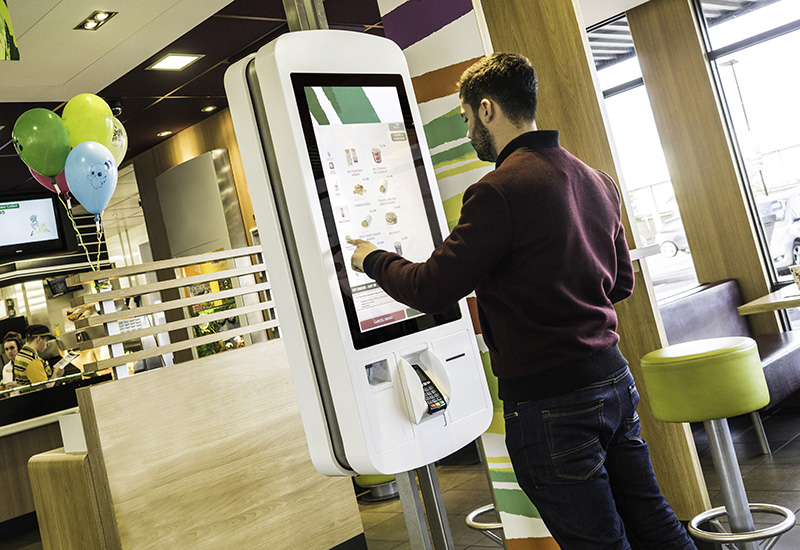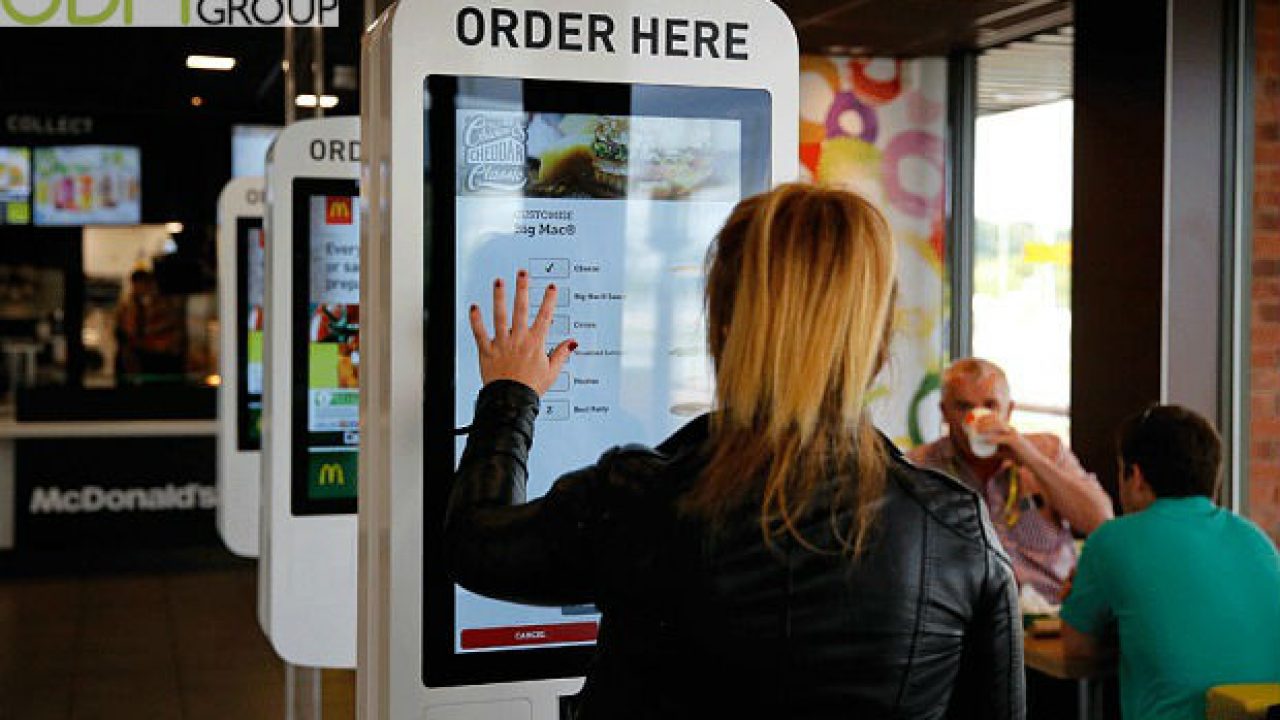The introduction of self-service kiosks across various sectors, especially in hospitality, has sparked numerous debates.
The emergence of self-service kiosks in fast food chains marks a significant evolution in the customer service and operational efficiency landscape. This innovation was initially introduced as a response to the growing demand for faster, more efficient service and the need to alleviate long queues during peak hours.
The concept of self-service kiosks allowed customers to browse the menu, customize their orders, and make payments without the need for direct interaction with staff.
This shift not only streamlined operations but also enhanced the customer experience by offering greater control over the ordering process and reducing wait times.
The adoption of these kiosks by fast food chains represented a pivotal moment in the industry, leveraging technology to meet changing consumer expectations and operational challenges.
McDonald’s, a global leader in the fast food industry, played a crucial role in popularizing the self-service kiosk model. Recognizing the potential to revolutionize the dining experience, McDonald’s began rolling out kiosks across its stores worldwide, effectively setting a new standard for the industry.

This move was part of a broader strategy to integrate technology into their operations, aiming to increase efficiency, reduce errors, and improve customer satisfaction. By implementing self-service kiosks, McDonald’s was able to offer a more personalized and efficient ordering process, encouraging other fast food chains to follow suit.
The success of McDonald’s kiosks demonstrated the viability and benefits of this technology, paving the way for widespread adoption across the sector. McDonald’s commitment to innovation and customer service excellence through the introduction of self-service kiosks has underscored the importance of adapting to technological advancements in the fast-paced world of fast food.
However, critics often claim these innovations threaten jobs and the very essence of customer service. However, a closer examination reveals a different story, one where technology and human service coexist and thrive together.
Kiosks are job killers
One of the most persistent myths is that self-service kiosks directly lead to job losses. In reality, these devices often redistribute labor rather than replace it.
Staff members freed from routine order-taking are reassigned to roles that require a personal touch, such as customer assistance and quality service enhancement.
Far from cutting jobs, kiosks can lead to more dynamic and engaging roles for employees.
Trends in the industry suggest that they actually contribute to job creation, transformation, and enhancement in various ways. Here are 10 trends demonstrating this positive impact:
- Role Transformation: Rather than eliminating jobs, kiosks are transforming roles within restaurants. Employees are moving from order-taking to roles that require more interpersonal skills, such as customer service and engagement.
- Increased Efficiency: Kiosks handle routine transactions, allowing staff to focus on improving the dining experience, kitchen efficiency, and food preparation, ultimately requiring more skilled labor in these areas.
- Enhanced Customer Service: With kiosks taking over the ordering process, staff are redeployed to roles that directly enhance customer service, such as table service or more interactive roles, improving overall job satisfaction.
- Job Creation in Tech Support: The adoption of kiosks leads to new jobs in IT support and maintenance, both within restaurant chains and among their suppliers, reflecting a shift towards more technologically oriented employment opportunities.
- Training and Skill Development: The integration of kiosks necessitates training programs for staff to manage these systems, fostering a culture of continuous learning and skill development.
- Higher Volume, More Jobs: By improving efficiency and customer throughput, kiosks can drive higher sales volumes, which, in turn, can lead to the creation of more jobs to handle the increased demand.
- Expansion Opportunities: The cost savings and increased efficiency provided by kiosks can fuel expansion plans, leading to the opening of new locations and thus, creating more jobs.
- Improving Employee Retention: Automating routine tasks can lead to higher job satisfaction as employees engage in more meaningful work, potentially reducing turnover and the associated costs of hiring and training new staff.
- Creating Value-added Roles: The data collected by kiosks on customer preferences and ordering patterns can lead to new roles in data analysis and marketing, focusing on personalizing the customer experience and improving product offerings.
- Boosting the Economy: The broader adoption of kiosks across the fast-food industry can stimulate economic growth by encouraging technological innovation and the development of new business models, contributing to job creation beyond the confines of individual restaurants.
Loss of hospitality’s heart and soul
Another concern is that kiosks steal the spirit and soul of hospitality businesses. On the contrary, by handling routine transactions, kiosks allow staff to dedicate more time to hospitality—engaging with guests, providing personalized service, and creating memorable experiences.
This blend of technology and personal interaction enriches the hospitality spirit.

Kiosks make services impersonal
The fear that kiosks make services impersonal overlooks how they can enhance customer interaction.
With kiosks handling basic tasks, employees can focus on providing personalized attention, solving complex queries, and engaging customers in meaningful ways.
Only younger customers can navigate kiosks
While younger demographics might adapt quickly to new technologies, self-service kiosks are designed with user-friendliness in mind, catering to all ages.
User interfaces are intuitive, often featuring large buttons, simple navigation, and clear instructions, making them accessible to everyone.
Kiosks are unreliable and prone to failure
Like any technology, kiosks can encounter issues, but advancements in design and support have made them highly reliable.
Regular updates and maintenance ensure they provide consistent service, and when problems do arise, staff are typically on hand to offer immediate assistance.
Kiosks limit customer choice
Contrary to the belief that kiosks limit options, they often provide more detailed information on menus and services, enabling customers to explore a wider range of choices and customize their orders to their preferences.
Kiosks are too expensive to implement
While the initial setup of self-service kiosks involves investment, the long-term benefits—such as increased efficiency, higher customer turnover, and reduced labor costs—often outweigh the initial expenses.
Moreover, the cost of kiosk technology has decreased over time, making it an affordable option for many businesses.
Conclusion
The myths surrounding self-service kiosks and employment stem from misunderstandings about how technology impacts the workforce and customer service.
Far from diminishing employment opportunities or the quality of service, kiosks can enhance job roles, deepen customer interactions, and support the growth of hospitality businesses.
As we move forward, it’s crucial to embrace technology as a tool that complements human capabilities, not one that replaces them.




